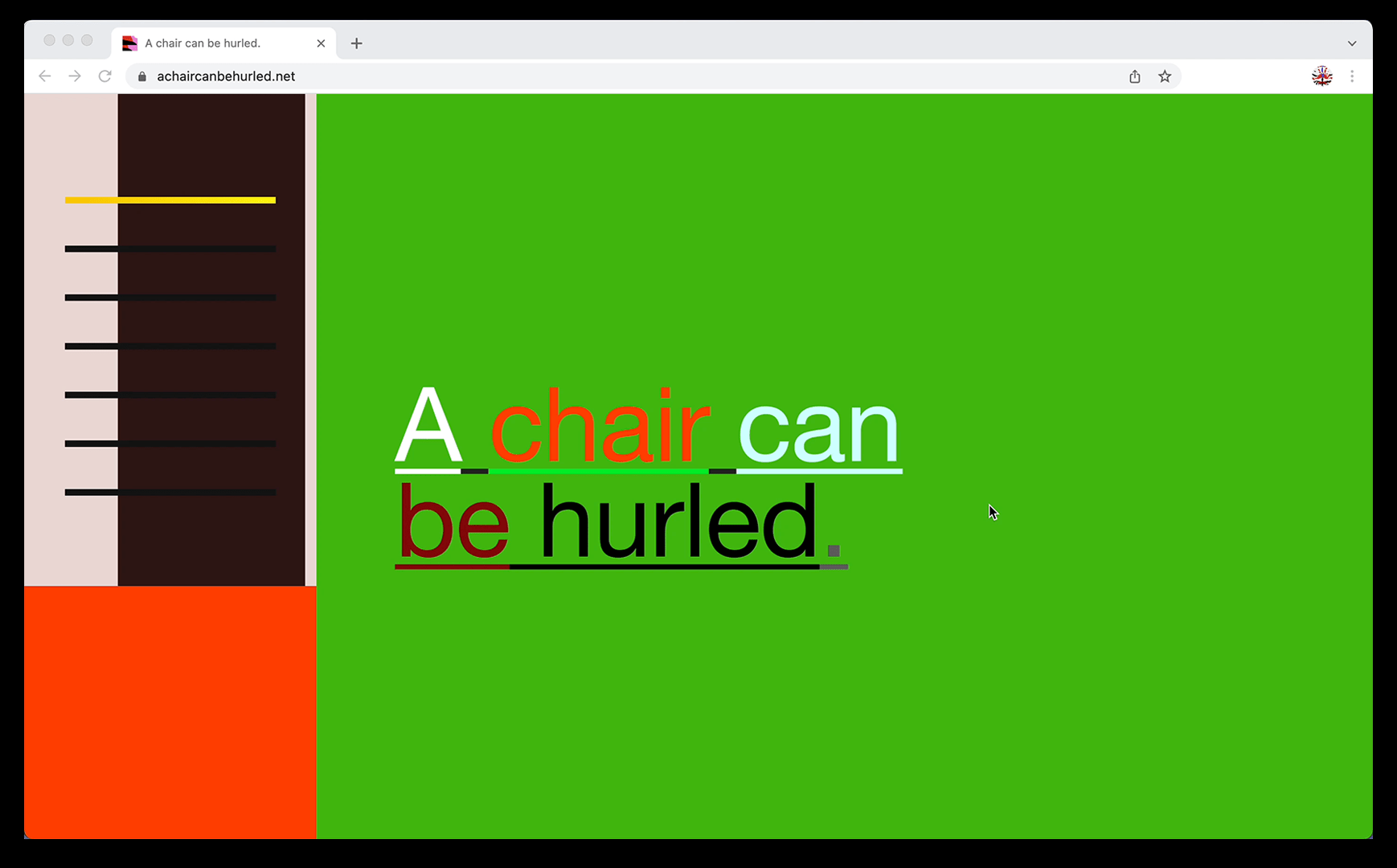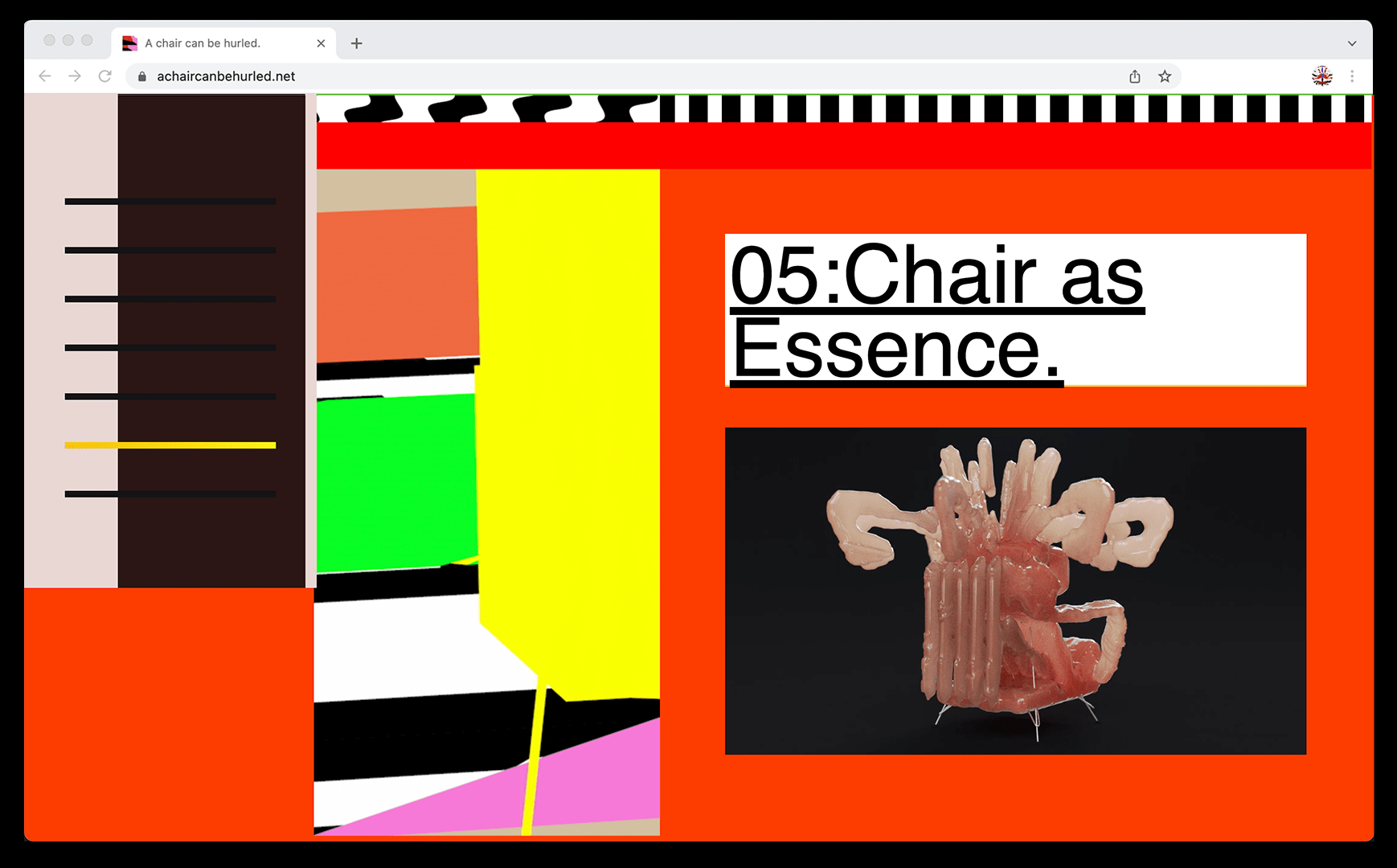A chair can be hurled.

Aaron Whitney Björk
The online exhibition A chair can be hurled uses an apartment as a backdrop for a paramnesiac experience. Nuclear-colored wallpapers illuminate the homepage, housing five films created for this exhibition. Filling the apartment are pieces of furniture created by recasting the circuit maps from Formula One races that were canceled in the 2020 pandemic. The project considers the shifting logic of speed during the pandemic–complicating the signs of speed, reconciling the past’s future, and scrutinizing the materiality of movement, both as an animated form and cultural phenomenon. In the 1958 treatise Theory of the Dérive, Situationist Guy Debord writes “that cites have contours, currents, fixed points and vortexes that strongly discourage entry into or exit from certain zones”.1 These energies of urban space are taken for granted if you are not actively questioning, looking, testing, or stressing the flows. However, the weight of the pandemic has stressed the city in ways that make these currents more evident. What comes to mind are the parking garages transformed into covid-19 triage centers, duct tape striped sidewalks, the kitchen tables turned into offices, the high speeds of cars traveling during what used to be rush hour traffic jams, and the ballooning of tent dining onto the sidewalks and boulevards are just some examples of the city in flux. To then intersect this stress with the growing homelessness crisis and mass evictions that have swept cities, the apartment becomes a highly contested space as they serve as interior bubbles from the reality of urban street life.









Aaron Whitney Björk is an artist and educator whose research-based art practice focuses on the cross-cultural transmission and translation of images and ideas across neoliberal economies. Cognitive labor, postcolonial observations, and the politics intrinsic to and exacerbated by the internet fuel his experimental practice. Pulling attention towards the entanglements of infrastructures developed to control the flow of information, bodies, genetics, commodities, minerals, shapes, and patterns is at the forefront of his thinking. These concerns emerge as experimental videos, immersive installations, internet-based art, courses, workshops, and progressive publications.
Björk was CFAR’s 2020-2021 Designer-In-Residence and Research Associate. Currently, he serves as a faculty member at Art Center College of Design in Pasadena, California.
Previously, Björk was a co-founder of the Los Angeles-based motion design collective BORN (2006–2009) and a curating member at Ditch Projects (2016–2019), where he helped organize and host experimental and permissive exhibitions that promoted underserved artists in the Pacific Northwest.
1Guy Debord. Theory of the Dérive. Situationist International Anthology, Revised and Expanded Edition, edited and translated by Ken Knabb. (Bureau of Public Secrets, 2006). Available at www.bopsecrets.org/SI/2.derive.htm. No Copyright